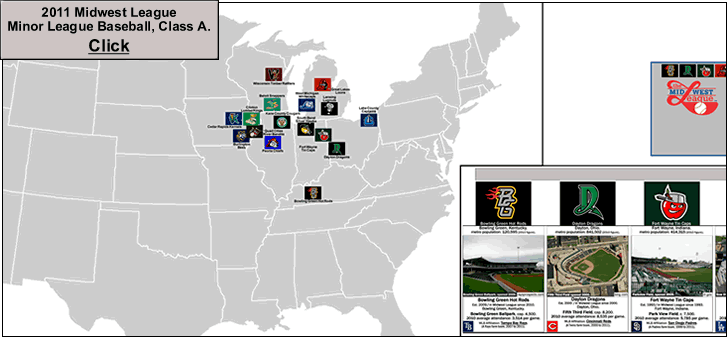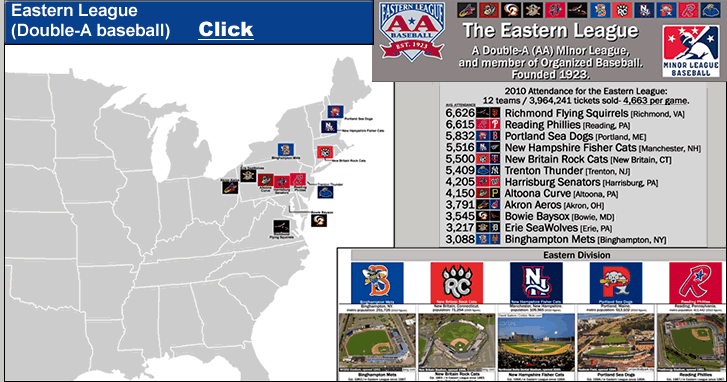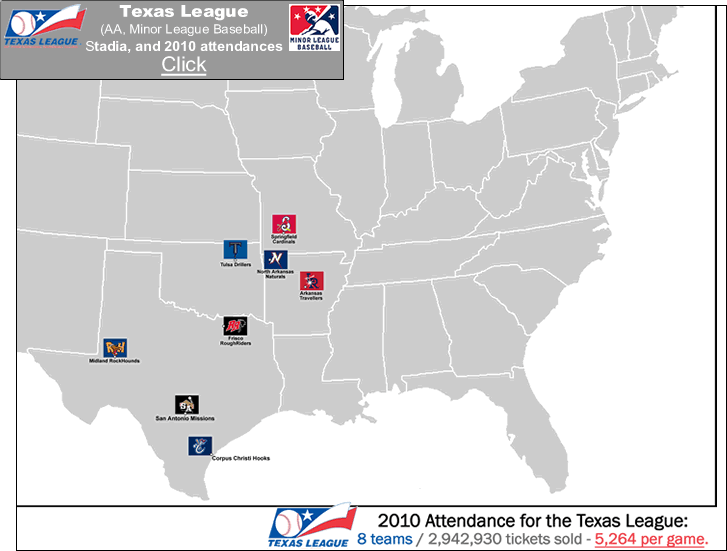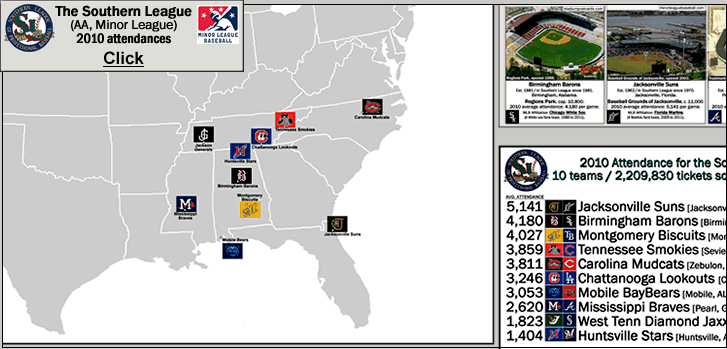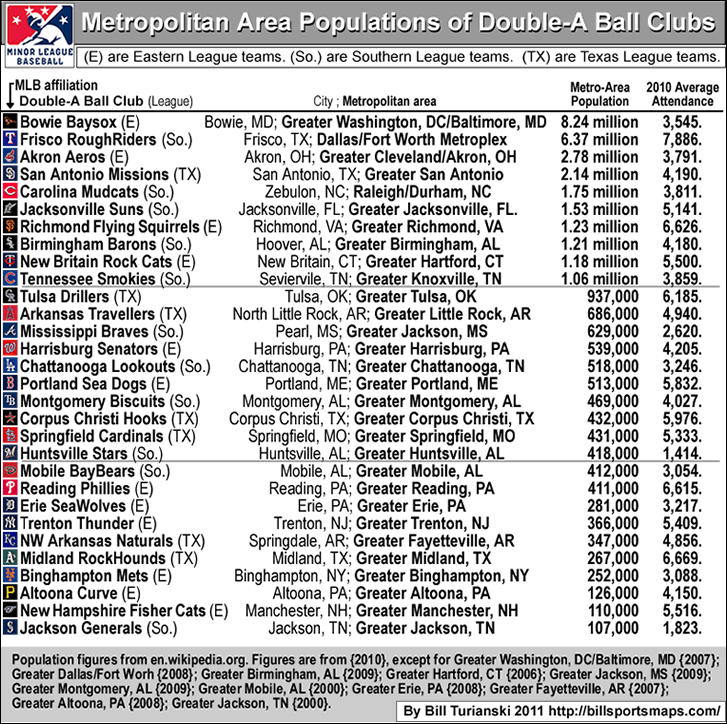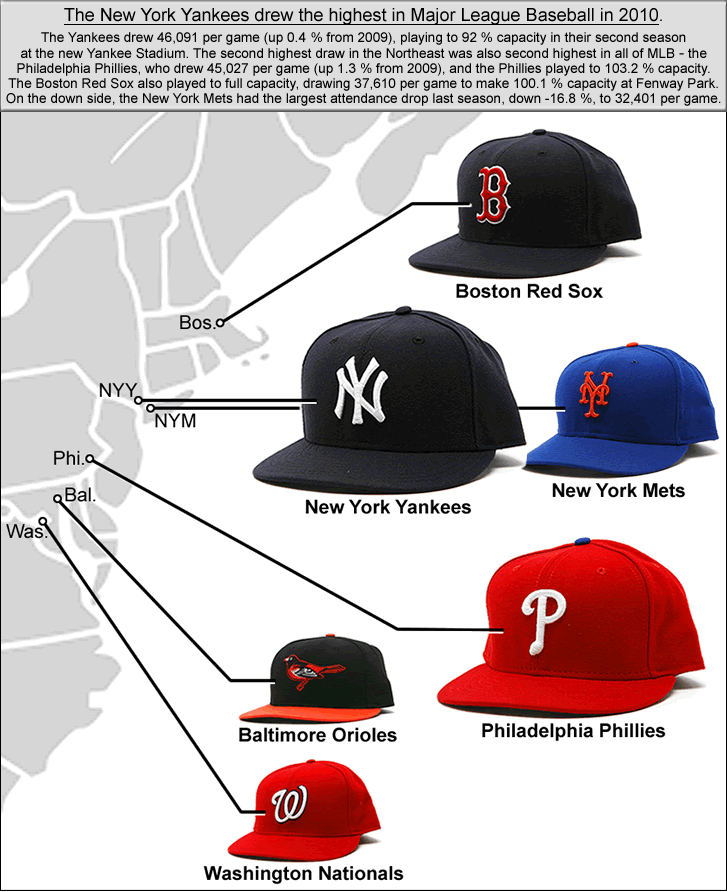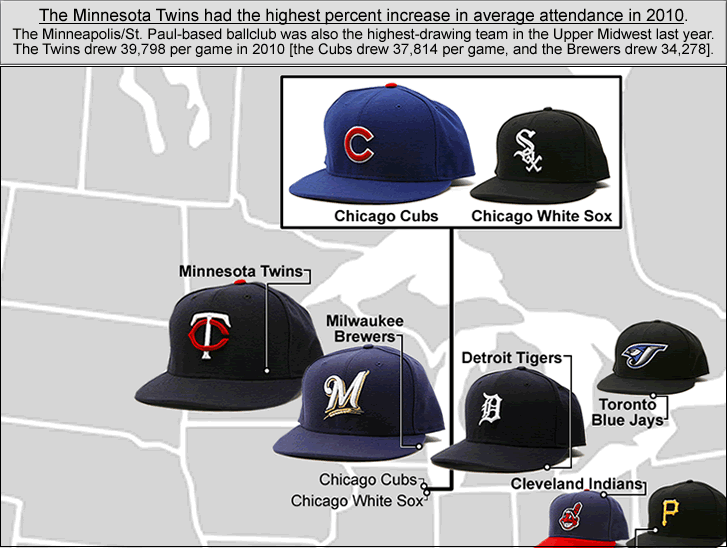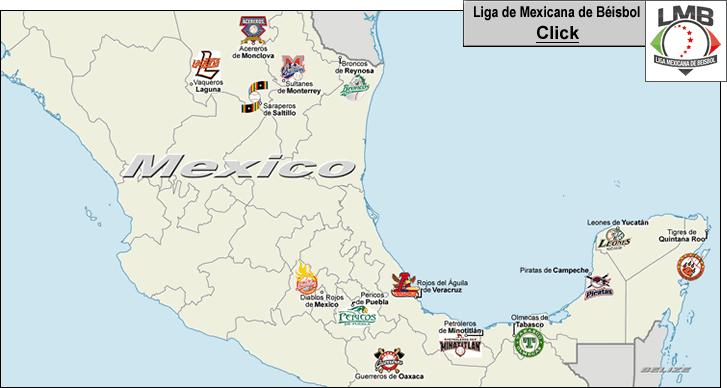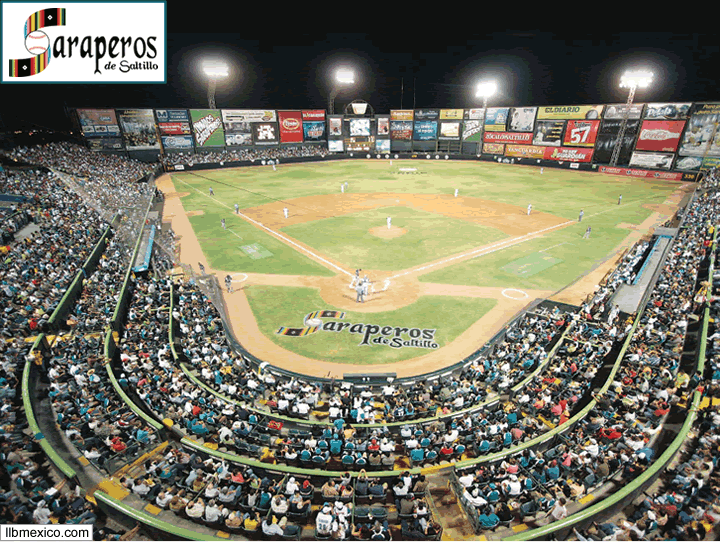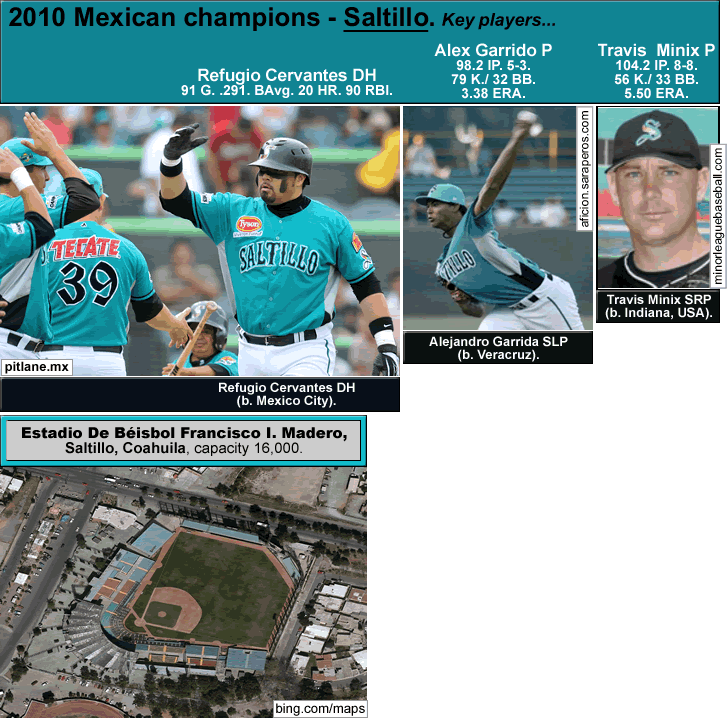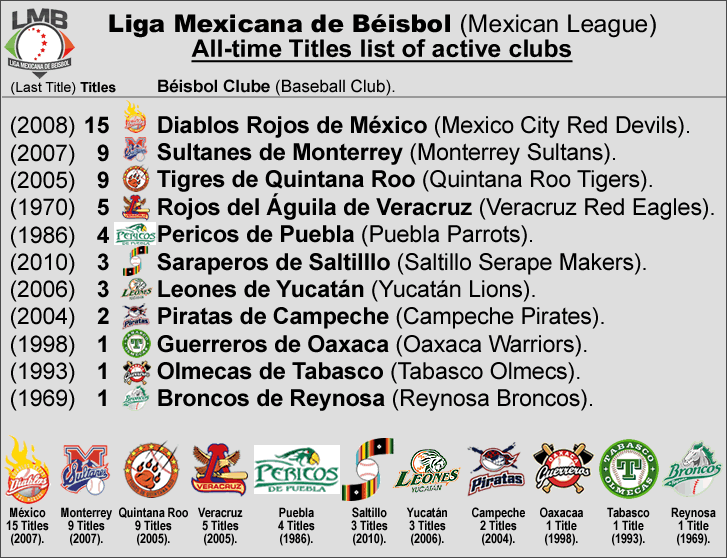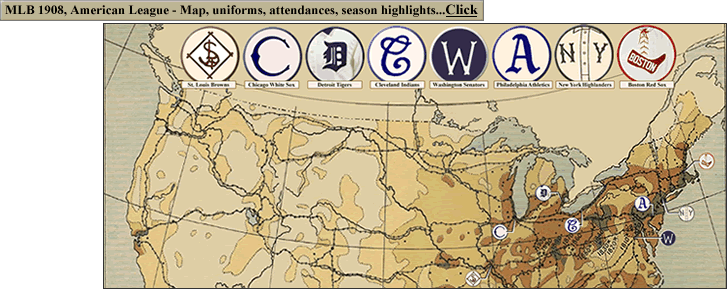
1908 National League
…
…
[Please note: a similar map was also posted for the 1908 American League, and I covered 1908 MLB attendance figures (for both the AL and the NL) in that post, here,
Major League Baseball - 1908, American League, with season highlights, 1908 uniforms and 1908 MLB attendances (billsportsmaps.com from 17 Oct. 2010).]
The 1908 National League season featured a three-way pennant race between the Chicago Cubs, the New York Giants, and the Pittsburgh Pirates. Because of an unusual sequence of events, the 1908 National League season required an unprecedented post-season replay of a game to decide the pennant winner. That is covered in the two articles on the left side of the map page. The final standings for the 1908 National League season are at the top, left. At the bottom, center of the map page are photos and thumbnail profiles of the prominent figures on the two teams that met in the re-played game which was held on October 8, 1908, at the Polo Grounds in upper Manhattan Island, New York City.
I recommend reading the text in the image sequence below, before jumping over to the map page [note: the bulk of the text below is repeated at the text block in the upper left on the map page]…

1908 World Series – Chicago Cubs (National League) defeat Detroit Tigers (American league) 4 games to 1 game…
After the extremely tight and unusual pennant races in both leagues {American League, 1908 season map, with 1908 attendances of all MLB teams, here}, the 1908 World Series was destined to be anti-climactic. [This was a re-match of the 1907 Fall Classic, which saw the Cubs sweep the Tigers, 4 games to 0.] In the first game of the 1908 series, at Detroit’s Bennett Field, in front of 10,812, the Tigers’ rookie hurler Ed Summers had a 6-5 lead entering the ninth inning, when he proceeded to give up 6 consecutive hits and 5 runs to the Cubs. Mordecai “Three Finger” Brown got the win for the Cubs. In the second game, at Chicago’s West Side Grounds, in front of 17,760, the Cubs broke a scoreless deadlock with 6 runs in the bottom of the 8th inning, including a 2-run homer by Joe Tinker. Orval Overall was the winning pitcher. In game 3, the Tigers’ bats finally came awake, and Detroit beat Chicago 8-3 in front of 14,543 at the West Side Grounds. Game 4 was played back at Bennett Field in Detroit, and in front of 12,907, Cubs’ ace Mordecai Brown came through, and shut out the Tigers 3-0. By this time, the Tigers, and their fans, had given up the ghost, and in front of an embarrassingly small crowd of just 6,210 at Bennett Field, the Cubs again shut out the Tigers 2-0, behind Orval Overall. So the Chicago Cubs were again the champions. The Chicago Cubs have never won another World Series title.
The Chicago Cubs have never won another World Series title since 1908…
People love to talk about curses in baseball, but it is strange that the curse of unsporting behavior has never been popularly ascribed to the 1908 Chicago Cubs. Cubs shortstop Johnny Evers pressed the point that technically Fred Merkle should have been called out for not advancing to second base after the winning run had scored on that fateful game of September 23rd, 1908 (and in some versions, such as the New York Times account, first baseman/manager Frank Chance was described as having “grasped the situation” and directed the ball to be retrieved from the stands and be thrown to second base). Ball players had been doing what Merkle did for over 30 years in major league baseball, because crowds of unruly fans inevitably would storm the field after a winning run was scored, and it was very dangerous to be tarrying in what was essentially a mob scene. The umpire, Hank O’Day, was coerced into contravening the established procedures of the day, and for doing so he was later criticized by many, including the preeminent umpire of that era, Bill Klem. The whole incident was so convulsive that the National League President, Harry Pulliam, who was totally savaged by the media for allowing the Merkle’s Boner ruling to stand, committed suicide a year later.
On that day at the old Polo Grounds, the Cubs got a baseball from the crowd (it was probably not even the game ball, {see this}), and completed a play for an out when the field was already overrun by boisterous fans. The Cubs got their way that day, overstepping three decades worth of established procedure in baseball games. So the Cubs got their National League pennant in a sneaky way, then the Cubs won their second (and second-consecutive) World Series title…but the Cubs have never won another World Series title since. Hey Cubs fans, forget about that Curse of the Billy Goat malarky {see this}…The Curse of Merkle’s Boner is the real reason your ball club has never won another championship. The Chicago Cubs beat the New York Giants in 1908 with unsporting behavior, and it has been nothing but a century of failure for the Chicago Cubs since then. [The Cubs have failed to win a world championship in 13 post season appearances since 1908, including being 0 for 7 in World Series appearances (their last being in 1945, when they lost to Detroit in 7 games), and 0 for 6 in playoff-era post season appearances (their last in 2008, when they were swept by the Los Angeles Dodgers in the NLDS; their previous appearance being in 2003, when they fell to the Florida Marlins in the NLCS, a series made notorious by the Steve Bartman incident {see this}).
---
1908 National League map and 1908 NL uniforms...
The main feature of the map page {see it here} is a railways and population map of the United States, from 1900. To this map I have added the jersey or cap crests of the 8 National League ball clubs. The large crests shown at the top of the map are arranged to reflect the western-to-eastern distribution of the 8 NL ballclubs, while the very small club crests serve to locate the ball clubs' home cities on the map. On the far right of the map page I have shown the 1908 uniforms of the 8 NL ball clubs, as well as the 2010 home ball caps of the modern version of each of these 8 NL franchises, 5 of which still play in the same city over a century later. Those 5 ball clubs are the Chicago Cubs, the Cincinnati Reds, the Philadelphia Phillies, the Pittsburgh Pirates, and the St. Louis Cardinals. 3 franchises have moved since 1908. The Boston Doves, originally known as the Boston Red Stockings, then the Boston Beaneaters, later became the Boston Braves (in 1911), before moving to Milwaukee, Wisconsin in 1953, becoming the Milwaukee Braves, but then moved again to Atlanta, Georgia, becoming the Atlanta Braves, in 1966. The Brooklyn Superbas (aka Trolley Dodgers) became officially known as the Brooklyn Robins from 1914 to 1933 (after their manager Wilbert Robinson) but all the while were more popularly known as the Brooklyn Dodgers (this name became official in 1934 {see this, a chart of Brooklyn/Los Angeles Dodgers' uniforms and logos, from a post I made a year ago}). The Brooklyn Dodgers moved to California in 1958, becoming the Los Angeles Dodgers. The New York Giants also moved to California in 1958, becoming the San Francisco Giants.
---
The Dead-ball Era, 1900-1920
The Dead-ball era in Major League Baseball is usually defined as the time period from 1900 to 1920, although some baseball people place the starting date of the Dead-ball era all the way back to the beginning of organized baseball, which is circa 1845 [the National League was founded in 1876; and the American League was established as the second major league in 1901]. For the purposes of this article, the Dead-ball era will be framed as the 21 National League seasons and the 20 American League seasons from 1900 to 1920. In 1920, Babe Ruth, newly arrived from the Boston Red Sox, (where he hit 24 HRs in 1919 as a pitcher and a utility outfielder), hit a then-inconceivable 54 home runs as a regularly starting New York Yankee outfielder. Also in 1920, changes were made to the ball (a different yarn and a different wrapping procedure was used), which, while Major League Baseball has always insisted had no effect on the ‘liveliness’ of the ball (citing a US Bureau of Standards test), was nevertheless labelled “the jackrabbit ball” by players and pundits alike. Also, one year later in 1921, a rule was put in place which demanded that baseballs be replaced when dirty. This aided the batter both by putting less “dead” balls in play as well as putting more visible balls into play. Diminished size of the outfields in ballparks also contributed to the surge in home runs in the 1920s. And the effect that Babe Ruth himself had on the end of the Dead-ball era cannot be discounted, as the conventional wisdom of “small ball” was swept away, bringing in an era (that remains to this day) where hitters were encouraged to, and often expected to, swing for the fences.
The Dead-ball era was a time when pitchers dominated the game, and records like Cy Young’s 512 wins or Ed Walsh’s 1.82 lifetime ERA will almost certainly never be broken. The Dead-ball era saw very few out-of-the-park home runs, and saw the lowest-ever slugging percentages {see this chart}. The Dead-ball era was characterized by a base-to-base style of play with the emphasis on advancing runners through stolen bases, sacrifice hits and bunts, hit-and-run-plays, and hitting techniques such as the “Baltimore chop‘ . Because of the vast outfields in many of the ballparks, there were a lot more triples in the Dead-ball era, and inside-the-park home runs were way more common than they are today. During the 1900-1917 time period there were 15 instances between the two Major Leagues when the home run leader hit less than 10 HRs (!)…this happened in the American League in 1905, 1907, 1908, 1909, 1914, and 1916; and this happened in the National League in 1902, 1903, 1904, 1905, and 1909. {From Baseball Almanac.com, Year by Year Leaders for Home Runs}. To give you an idea of how rare home runs were in the first two decades of the 20th century, the Philadelphia Athletics’ third baseman Frank ‘Home Run’ Baker got his nickname by hitting 2 home runs in the 1911 World Series, after he led the AL that season with 11 round trippers. Eleven home runs is a good month for sluggers these days. Baker finished his 13-season career with 96 HR, very good for his day, but the stuff of three good seasons post-1920. If you think all this made for boring baseball, there is perhaps one saving grace about the style of play during the Dead-ball era…the profusion of triples.
All-Time Triples Leaders…
The list of all-time triples leaders is skewed heavily towards the early days of baseball and particularly the Dead-ball era of 1900-1920. And only 2 of the top 20 in the all-time triples leaders list had careers which came after the end of the Dead-ball era…#10 on the list, Paul ‘Big Poison’ Waner, and #19 (tied) on the list, Stan ‘The Man’ Musial. {‘List of Major League Baseball players with 100 triples‘, from en.wikipedia.org}.
All-time triples leaders. Below: The top 8 All-time Triples Leaders, all of whom had at least 200 triples, lifetime. Each player is shown in a photograph or an illustration, with his ball clubs and seasons listed, along with his high for triples in a season…[Note: all these players are in the Baseball Hall of Fame.]
1. ‘Wahoo’ Sam Crawford. 309 triples. {Hall of Fame bio}.
2. Ty Cobb, ‘the Georgia Peach’. 295 triples. {official web site of Ty Cobb}.
3. Honus Wagner, ‘the Flying Dutchman’ [he was German; "Dutch" being a mutilation of Deutsch]. 252 triples. {official site of Honus Wagner}.
4. Jake ‘Eagle Eye’ Beckley. 244 triples. {Jake Beckley bio at SABR.org, by David Fleitz}.
5. Roger Connor [6 foot 3 inches tall and the man who gave the New York Giants their nickname]. 233 triples. {‘Roger Connor: The 19th Century HR King‘, by Mike Attiyeh at The Baseball Guru.com}.
6. Tris Speaker, ‘the Grey Eagle’. 222 triples. {Tris Speaker bio at Baseball Reference.com}.
7. Fred Clarke. [Player/manager of 4 of Pittsburgh's 9 NL Pennants]. 220 triples. {Hall of Fame bio}.
8. Dan Brouthers. [First great slugger in MLB history]. 205 triples. {Hall of Fame bio}.
All MLB players with 200 Triples, lifetime
[Note: click on image below, for an enlarged version.]
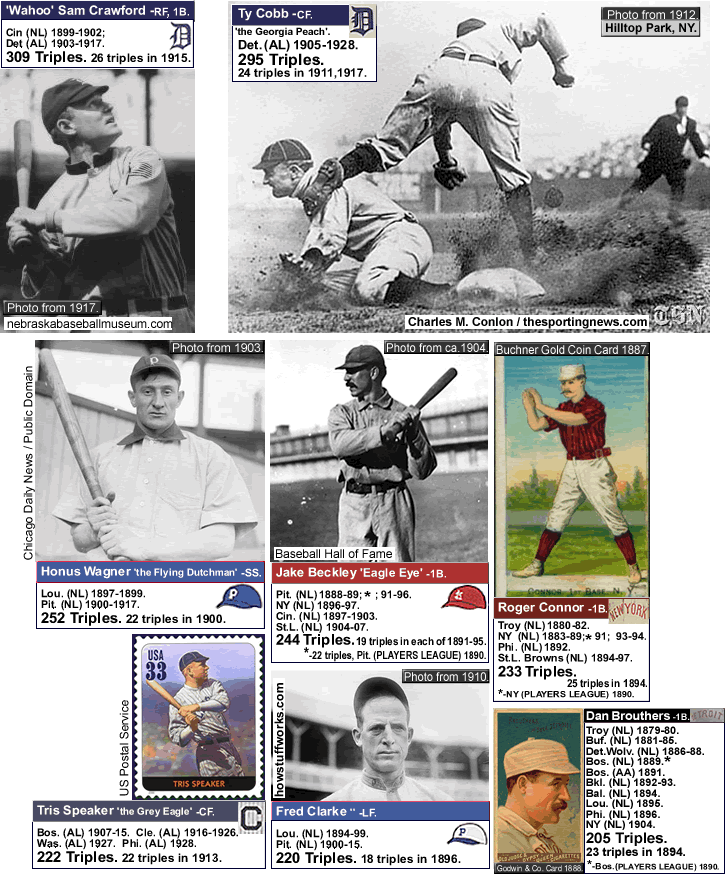
…
The ball during the Dead-ball era, and the effect of widespread use of the then-legal spitball…
The name dead-ball is pretty straightforward, because back in the early days of professional baseball, the ball was not at all lively when struck by the batter, and the ball usually did not travel too far. Furthermore, as a cost-cutting measure (since balls were expensive back then), balls were very rarely replaced during the game, like in modern baseball games. In the Dead-ball era, balls were routinely used for up to 100 pitches. In the modern Major League Baseball game, a ball lasts, on average, 6 pitches, and 5 or 6 dozen balls are used in the average 9 inning game. {NumberOf.net/ Number of baseballs used in a MLB game}.
Plus, before and during the Dead-ball Era, the moment a new ball was thrown into the field, a pitcher’s first job was to dirty up that ball. So if the baseballs started out soft and not very visble, you can imagine what they were like 3 or 4 innings into the game, after being tossed around, whacked by baseball bats, rolled in the dirt, grass, and mud, and spat upon and scuffed up by the pitchers. In other words, 100 years ago in Major League Baseball, baseballs were not very lively by design, and literally dead by overuse. And because of the inevitable dirtying up of the ball, it stopped being even close to a white orb and started looking like a misshapen brown blur to the batters. The batters had a real hard time seeing the ball.
The spitball was another major reason offensive production was so low in the Dead-ball era. Spitball was the catch-all term for putting something on the ball, it didn’t have to be spit…mud worked fine, and petroleum jelly was (and still is) a popular choice. With a spitball, the ball behaves erratically in flight due to the extra weight on one part of the ball’s surface.
1911: The cork-centered ball pushes up offensive numbers (temporarily)…
Another reason for low scoring and meager offensive numbers in the very early years of organized baseball was that, prior to 1911, the baseball had no cork center. The cork-centered ball was invented by Ben Shibe (who was then co-owner of the American League’s Philadelphia Athletics) and first marketed by the Reach Company, who were then the American League’s official baseball suppliers, in 1909, and were in use throughout Major League Baseball (ie, both the American League and the National League) starting in 1911, causing a spike in offensive statistics, but only temporarily. A telling statistic of the cork-centered ball’s initial impact is that the only two plus-.400 batting averages between 1902 and 1919 were attained in the first two seasons after the cork-centered balls began being used in 1911. Ty Cobb (of the American League’s Detroit Tigers) hit .420 in 1911. This was Cobb’s highest-ever season average. The next year, 1912, Cobb hit .410. Meanwhile, ‘Shoeless’ Joe Jackson (of the AL’s Chicago White Sox) batted .408 in 1911. And in the National League, the highest home run total by a player went from 10 HR in 1910 to 21 HR in 1911 (by Pittsburgh’s Frank Schulte); also in 1911 the new cork-centered ball allowed the Philadelphia Phillies’ home run total to jump from 21 in 1910 to 62 in 1911 (more on the Phillies and their home-run-friendly and odd-shaped ballpark later). {League by League Totals for Batting Averages , from Baseball Almanac.com}
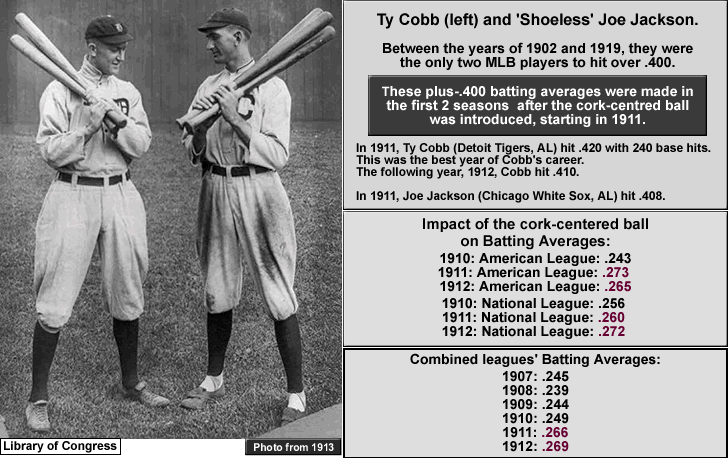
Circa 1913: the scuff-ball gives the pitchers the upper hand again…
But a pitching innovation (more like a rule-infraction) that made its way to major league baseball circa 1912-13 countered the cork ball’s effectiveness…the invention of the scuffed ball, or emery pitch, in 1908, by then-minor league pitcher Russ Ford {Russ Ford bio at Manitoba Sports Hall of Fame site}. The scuffed ball is achieved by rubbing the ball against anything rough or sharp, such as a concrete wall, an emery board, or a sharpened belt buckle. The damage to the ball’s surface causes the ball to take an irregular flight path that with practice a pitcher can control (the scuff marks cause wind drag on one part of the ball’s surface). The scuff-ball was declared illegal in 1914, but that didn’t stop its use by any means. It just made it go “underground”. The scuff-ball still exists to this day…in the 1950s, Yankee legend Whitey Ford had his wedding ring sharpened to surreptitiously scuff the ball; in the 1980s Texas Ranger relief pitcher Rick Honeycutt was caught using an upside-down thumbtack held to a finger on his glove hand by a band-aid; plus the scuff ball was pretty much the basis of the entire career of Joe Niekro, who favored the good old emery board. How to throw a scuff ball?…{see this}. So between the still-legal spitball, and the illegal but soon prevalent scuff-ball, offensive production in baseball significantly dropped circa 1913 to 1919.
…
The role that ballparks with vast outfields played during the Dead-ball era…
West Side Park (II), Chicago, Illinois -1893 to 1915, home of the Chicago Colts (1893-1897) / Chicago Orphans (ca. 1898-1901) / Chicago Cubs (1902-1915)
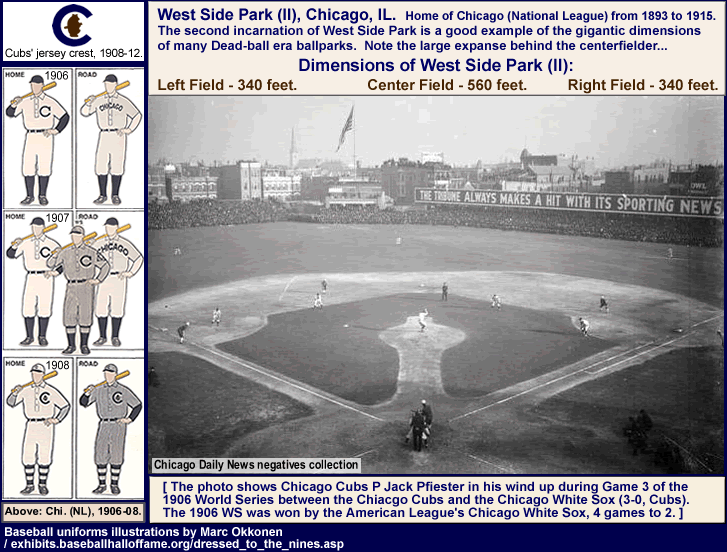
Dressed to the Nines – A history of the Baseball uniform.
…
Exposition Park – 1891 to June, 1909, home of the Pittsburgh Pirates -

Another factor in low offensive production in the first two decades of 20th century baseball was the fact that most ballparks back then had gigantic outfield dimensions, with many ballparks having parts of their outfield fences well over 500 feet away from home plate (see Chicago Cubs ballpark, above, and Boston [AL] ballpark below), and/or having the foul poles around 400 feet from home plate (see Pittsburgh ballpark, above). But as the 20th century moved out of its first decade, things were about to change and the ballparks being built would start featuring smaller outfield dimensions. This did not happen over night, and some of the new ballparks still had vast outfield dimensions (like Shibe Park in Philadelphia, and the original Comiskey Park in Chicago, and especially Braves Field in Boston), but the trend was towards smaller outfields, or in the case of ballparks like two famous New York City ballparks, the Polo Grounds and the original Yankee Stadium (1923-2008), a mix of short outfield fences on either side of a vast centerfield area. After the 1911 renovation and expansion, the Polo Grounds was basically a very long U-shaped structure with an outfield that resembled half of a rectangle with rounded corners {see this, Polo Grounds [1911-1957] schematic at Clem’s Baseball Blog }. Yankee Stadium (I) had right and left field foul poles less than 300 feet from home plate. The famous Short Porch of right field, which was designed to give maximum benefit to the compact, pull-the-ball swing of left-handed hitter Babe Ruth, was originally just 295 feet from home plate, and pretty much stayed that way until renovations in 1976 put it at 320 feet. {see this, Yankee Stadium, 1923 schematic at Clem’s Baseball Blog}. {Dimensions of Yankee Stadium (I), etc. from Ballparkls.com}. But the original Yankee Stadium had a maximum outfield distance of 500 feet in left-centerfield. So you might say this is the best of both worlds…vast areas in the central outfield to encourage the excitement of a three base hit or even an inside-the-park home run; and short fences near the foul poles to encourage the long-ball, bash ‘em in style of offense that the public began to (and still does) embrace.
…
In the 1909-1923 time period (15 years), 11 Major League ballparks were built, and, 10 of them were asymmetrical…
Examples of ball clubs that built ballparks circa 1909 to 1923 that were pretty much uniformly smaller than their preceding ballparks were in Cincinnati, with the Cincinnati Reds NL ball club; and in Boston, with the Boston Red Sox AL ball club. In Cincinnati, the vast outfield of the Palace of the Fans ballpark was replaced by the much smaller confines of the new Crosley Field, which opened in 1912. The Palace of the Fans had dimensions of 390 feet in left field / 510 feet in center field / 450 feet in right field. That is huge. Crosley Field had the considerably smaller outfield dimensions of LF: 360 ft./ CF: 420 ft. / RF: 360 ft. The diminished outfield space in Cincinnati after 1911 [this is not mathematically precise, but it will still give you an idea] LF: minus-30 ft. / CF: minus-90 ft. / RF: minus-90 ft.
In Boston, the absolutely gigantic outfield of the Huntington Avenue Grounds was replaced in 1912 by Fenway Park (which is still the home of the Boston Red Sox to this day, and is the oldest currently operating MLB ballpark). Huntington Avenue Grounds was only an MLB ballpark for 11 seasons (1901-1911), and its outfield dimensions were significantly expanded for just its last three seasons (1908-11), but that coincides with the Dead-ball era’s lowest slugging percentage and lowest pitcher’s ERA. In 1908 to 1911, Huntington Avenue Grounds’ outfield dimensions were LF: 350 ft. / CF: 635 ft. / RF: 320 ft. 635 feet in center field is pretty darn far away from home plate. Fenway Park’s outfield dimensions when it opened in 1912 were 324 ft. LF / 488 ft. CF / 380 ft. right-CF / 314 ft. RF. The diminished outfield space in Boston (AL) after 1911…LF: minus-16 ft. / CF: minus-150 ft. / RF: minus-6 ft.
Huntinton Avenue Grounds, Boston, Massachusetts – 1901-1911, home of the Boston American League ball club (1901-1907) / Boston Red Sox (1908-1911) 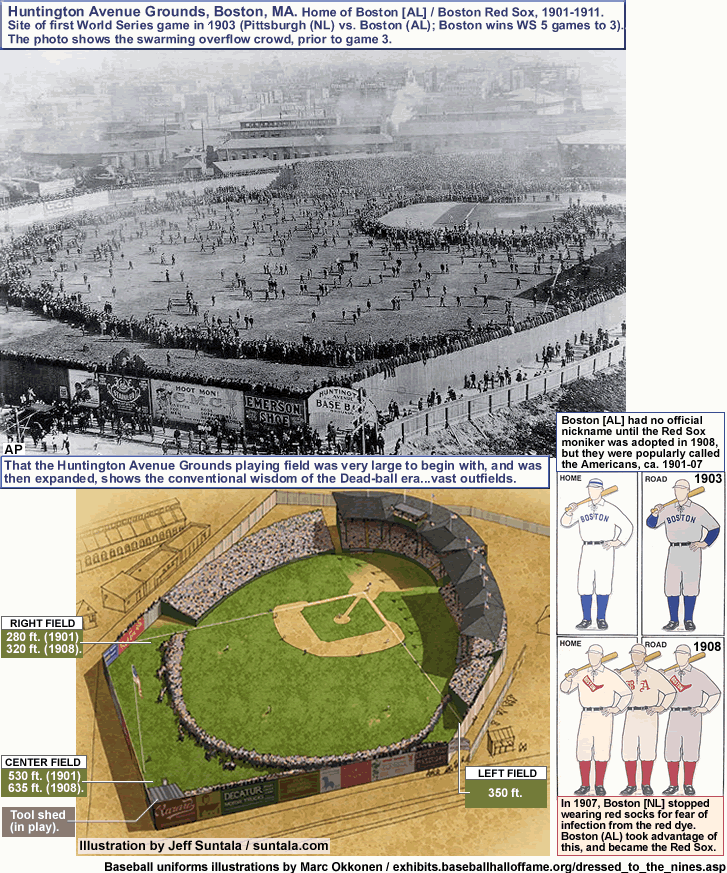
More ballpark illustrations, etc, at Jeff Suntala Illustration – Suntala.com .
A confluence of events led to most of these ballparks-with-gigantic-outfields to vanish before the 1920s. Basically, ballparks would burn down to the ground with terrifying regularity all through the early days of organized baseball, and this didn’t stop until ballparks stopped being constructed primarily of wood, but rather of steel and concrete, which occurred in the 1909 to 1920 time period (the first ballpark made primarily of concrete and steel was the Philadelphia Athletics’ Shibe Park, which opened in 1909). 9 of the 16 MLB ball clubs built new ballparks between 1909 to 1923 {list of MLB stadiums [current and former] here}. Shibe Park did have vast outfield dimensions, but all of the 8 other subsequent ballparks built between 1909 and 1923 had at least part of the outfield walls a shorter distance to home plate than the previous ballpark. And these new MLB ballparks being built in the time period of 1909 to 1923 were going up right when urban areas all across the United States became more crowded… in other words, in the last stages of the Dead-ball era, the ball clubs could no longer build new ballparks with giant outfields because urban real estate was at a premium. The newly built ballparks would have to conform to the smaller, irregular-shaped lots that were available. This, in retrospect, has made baseball such a fascinating and appealing spectator sport…because most every ballpark that was built in the 1909 to 1923 time period was built on an asymmetrical plot of land. There are exceptions, of course, two of which can be seen in the two Chicago ballparks built in this time period. In 1910, the White Sox built the first Comiskey Park, which was virtually symmetrical (it is said that the White Sox organization consulted with their ace pitcher, [all-time lowest ERA holder] Ed Walsh, when laying out the dimensions for the original Comiskey Park). And Weegham Park, which came to be known as Wrigley Field [in 1926], was built in 1914 in the then-mostly-undeveloped North Side of Chicago. Weegham Park was built for the Federal League team the Chicago Whales [the Federal League lasted only one season], and the Cubs took over the ballpark in 1916. The area soon did become developed, though, and when the Cubs renovated in 1938, they couldn’t expand, and instead built outfield stands in areas that once were part of the field, specifically the power alleys. So in a roundabout way Weegham Park/Wrigley Field conforms to the smaller-ballparks-built-in-established-urban-areas thesis.
…
The Asymmetrical Ballpark…
The proliferation of asymmetrical ballparks with smaller outfield dimensions wasn’t really planned, but it sure made baseball more interesting. Of course, circa 1960 to 1988 or so, the people running ball clubs and the smug urban planners running metropolitan areas totally ignored this fact, and forced ugly, astro-turf laden cookie-cutter, multi-purpose concrete stadiums on the public. The whole idea was “we can put our baseball team and our NFL football team in the same stadium, and who cares if the dimensions of the two sports fields are totally incompatible”. The multi-purpose stadium era pretty much set baseball back a quarter-century, but I digress.
Perhaps the best example of the marvelous effect that an asymmetrical ballpark can have on the game of baseball can be seen in Fenway Park in Boston, which opened in 1912, and operates to this day. Fenway is simply baseball heaven, and it is all because of the fact that the Boston Red Sox were forced to build a ball park on a plot of land that looks like a rectangle drawn by a blind man with a shaky hand {see this, Fenway Park schematic at Clem’s Baseball Blog}. The key to what makes the asymmetrical ballpark so visually appealing is an outfield wall the defies any sort of uniform sweep or curve, and which also varies in height, and in fact features the much-coveted “nooks and crannies” in the wall’s facade, where batted balls ricochet in unpredictable ways. Fenway Park has a brilliant nook in deep right-center field, called The Triangle {see this}, plus it features a unique shallow right field foul pole, the “Pesky Pole” (after Sox legend Jimmy Pesky) {see the photo here}, in the farthest right field, which is around 60 feet shallower than right field just 50 feet more towards right-center, where the bullpens are, and where the outfield fence is only 3 feet high. Fenway, of course, also features the famous Green Monster {see this}, which is a 37-foot wall, built to prevent easy home runs because the outfield wall there in left field is only 310 to 315 feet from home plate. These days you can watch the game from seats on top of the Green Monster, which is a brilliant concept that should be emulated elsewhere.
Asymmetrical Ballparks Built to Last…
Below: 11 of the 12 MLB ball parks built between 1909 and 1923, 11 of which which had considerably smaller outfield dimensions than the ballparks they replaced – all except Braves Field in Boston had smaller outfield dimensions [not shown, Sportsman's Park in St. Louis (1920-66)]…
[with illustrations from Clem's Baseball Blog {http://www.andrewclem.com/Baseball/Dimensions.html }.
Click on image below for chart...
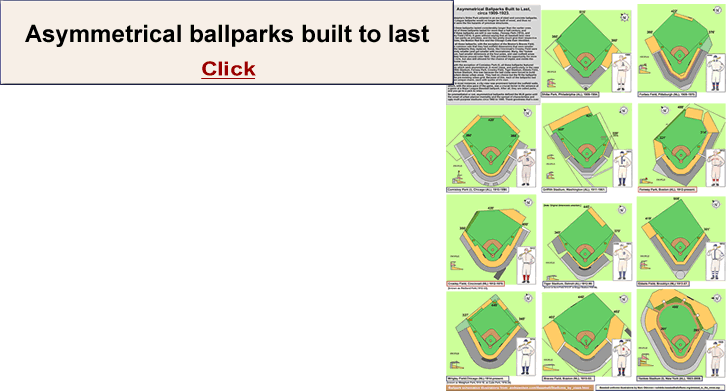
Philadelphia's Shibe Park ushered in an era of steel and concrete ballparks. Major League ballparks would no longer be built of wood, and thus no longer were the fire hazards of previous structures. So all these ballparks lasted considerably longer than the earlier ones. Several of these ballparks lasted for more than a half-century, and two of these ballparks are still in use today...Fenway Park (1912), and Wrigley Field (1914). It goes without saying that all baseball fans view these two parks as priceless, and the two pretty much give their respective ball clubs, the Boston Red Sox and the Chicago Cubs their identities. What all these ballparks, with the exception of the Boston's Braves Field, had in common was that they had outfield dimensions that were smaller than the ballparks they replaced. Some, like Cincinnati's Crosley Field were extremely smaller (and got smaller with renovations). Many, like Yankee Stadium, had smaller dimensions at the foul poles, and vast outfield areas and deep fences around center field. This provided the opportunity for more home runs, but also still allowed for the chance of triples and inside-the-park home runs. And with the exception of Comiskey Park (I), all these ballparks featured layouts which were asymmetrical. In most cases, and particularly in the case of Griffith Stadium, Fenway Park, Crosley Field, Tiger Stadium, Ebbets Field, and Yankee Stadium, this was because the ball clubs were forced to build ballparks in dense urban areas. They had no choice but to fit the ballparks into the pre-existing urban grid. Because of this, each of the ballparks had its own unique charm, each with quirks of its own. Plus, in most instances, a city-view was prominent behind the outfield walls, which, with the slow pace of the game, was a crucial factor in the ambiance of a game at a Major League ballpark. After all, they are called parks, and you go to a park to relax. So premeditated or not, asymmetrical ballparks defined the MLB game until the onset of urban-planner-mentality and the spread of characterless and ugly multi-purpose stadiums circa 1960 to 1990. Thank goodness that era of misguided ballpark design is over.
...
The Baker Bowl- a Dead-ball era ballpark ballpark with smaller outfield dimensions and inflated home run numbers...
To give more credence to the argument that outfield size played a huge factor in the lack of home runs in the Dead-ball era...the modern era [post-1900] record for home runs in a season, prior to the emergence of Babe Ruth as a slugger (ie, from 1920 on), was set by the Philadelphia Phillies’ Gavvy Cravath, when he hit 24 HR in 1915, which was actually a higher total than 12 of the 15 other teams’ entire home runs totals for that season (think about it…one player on one team had more homers than all 25 players on 80% of the other teams in the league that year). Cravath was a powerful hitter who, against the conventional wisdom of the day, consciously tried to hit homers instead of singles or doubles. And he played in the Phillies’ extremely quirky ballpark, the Baker Bowl, which featured a short right-center power alley (300 feet from home plate) and a right field fence that was just 272 to 280 feet from home plate. Baker Bowl could not be built with a larger outfield because the Reading and Pennsylvania Rail Road had a sprawling rail yard bordering its right and center fields. The result was home run numbers at the Baker Bowl were an anomaly for the time period. Even the 40-foot tin-covered brick wall the Philladelphia management erected in right field could not prevent the high percentage of homers being hit there (after 1920, the wall was increased to 60 feet high (!), with the addition of a 20 foot chain link fence above the 40 foot wall).

…
The 1906 Chicago White Sox, known as “the Hitless Wonders”…
The low-water mark of the Dead-ball era was around 1907-1908, with a MLB-wide batting average of just .239, an anemic slugging percentage of .306, and a pitchers’ ERA of below 2.40 runs per game. The poster boys for the Dead-ball era would be the 1906 Chicago White Sox, who hit just .230 as a team, with only 7 HR, but still managed to win the AL Pennant, and then go on to upset the Chicago Cubs in the only all-Chicago World Series. The Hitless Wonders featured 4 starters, Frank Owen, Nick Altcock, Ed Walsh, and Doc White who won 77 games between them, and contributed to a team ERA of just 2.13, including Ed Walsh’s 1.52 ERA [Ed Walsh played 13 seasons for the White Sox with a 195-126 record and has the lowest ERA in baseball history, 1.82. He was elected to the Hall of Fame in 1946.] As anemic as their offense was, with the Pale Hose batting average team leader that year being second baseman Frank Isbell with a .279 BAvg., the team did manage to hit 52 triples, though, but one might say that just shows you how prevalent triples were back then.…
…
Ultimately, to this day, what exactly caused the end of the Dead-ball era is still debated. Here are the popular theories.
1. In 1919, balls began being wound with a higher grade of yarn, and it was machine-wound as opposed to being wound by hand, leading to the the so-called jackrabbit ball. Major League Baseball denied that the ball was any more lively than the previous balls, but many in the game felt the balls from 1919 on were way more lively, and that MLB did this on purpose to spur more offense and thus more fan interest. Think about it, machine-wound instead of hand-wound…logic has it that those machine-wound balls are going to be tighter and springier.
2. More balls used per game. A new rule for replacing baseballs once they got dirty was enacted following the fatal beaning of Cleveland’s Ray Chapman at the Polo Grounds on August 16, 1920. New York Yankee submarine hurler and notorious headhunter relief pitcher Carl Mays threw a spitball which hit Ray Chapman of the Cleveland Indians in the head; Chapman died later that day {NY Times.com/ August 17, 1920}. There is no doubt that the use of more balls during each game was of huge benefit to batters.
3. Outlawing the spitball [see above], first by limiting it to use by only 2 pitchers per team in 1919, and grandfathering out the spitball in 1920 (ie, phased out, but allowing established spitball pitchers to still use it so as to not harm their careers). This definitely aided batters.
4. The rise of Babe Ruth as a power hitter influenced the hitting styles of other batters and encouraged teams to place less emphasis on station-to-station “small ball’, and swing for the fences. Ruth utilized a pronounced upper-cut in his swing, and others soon emulated it. This thesis is pretty hard to prove one way or the other. There is no denying the fact that Babe Ruth seized the imagination of the nation. And there is no denying the fact that by the late 1920s, scores of players had home run totals into the 40 or 50 mark per season. But offensive numbers were rising before Ruth’s HR totals skyrocketed in the 1920-21 time period.
5. The disappearance of ballparks with huge outfields. Also hard to prove, because so many ballparks didn’t have accurate measurements. But it stands to reason, once ballparks were being built with smaller dimensions in some parts of the outfield, that more homers would be hit, like at Yankee Stadium or at Sportsman’s Park in St. Louis (1920-66). But most all of the other ballparks that replaced older and much vaster outfield dimensions had been built in the 1909-to-1913 period (see Asymmetrical Ballparks illustration further above).
-> It probably was that the ball really was more lively. Combined with #2, #3, #4, and #5 above. The outlawing of the spitball (grandfathered in so that 17 spit-ballers were still allowed to use the pitch after 1920), led to increased offensive production. And, from 1921-on, more balls were used per game (after the death-by-hit-pitch Carl Mays/Ray Chapman incident in 1920/see #2 above). Tighter-wound/machine-spun balls – and more new, shiny-white, hard-and-hittable baseballs – were being put in play each game. Of course offensive production would increase simply by that fact alone. The batters could now actually see a hard white orb, whereas before 1921 and especially before 1919, by the 4th inning or so, the batter would have to try to hit a soft, discolored and beaten-up mess of a ball. Which game-ball do you think would be easier to hit, and easier to hit hard…the soft and discolored circa-1908 ball or the rock hard and bright white circa-1922 ball? Ty Cobb insisted that the livelier ball was the reason, in his autobiography. Ty Cobb would be the last person you would want to consult with on ethical behavior (Cobb was a virulent racist who once assaulted a heckling quadrapeligic; here is a nice example of how Cobb liked to treat the opposition. But when it comes to baseball, and specifically hitting a baseball, well, Ty Cobb’s views must be taken very seriously (he is , after all, the all-time leader in batting average).
___
Thanks to The National Baseball Hall of Fame’s “Dressed to the Nines” baseball uniforms database, featuring uniforms templates drawn by Marc Okkonen, {here}.
Thanks to the brilliant baseball ballpark historian and illustrator Jeff Suntala, who made those mesmerizing watercolors of the old ballparks I used in some of the images sequences on this post. I felt guilty using someone else’s artwork, but because I could not find any better images of these remarkable but now gone-and-sadly-forgotten ballparks, I felt I had to feature some of Mr. Suntala’s work. So please go to his site and ponder some commercial transaction (his old ballparks posters are very reasonably priced). www.suntala.com.
Thanks to the excellent Clem’s Baseball Blog, subtitled Our National Pastime & It’s Green Cathedrals. The asymmetrical ballparks chart utilized some of the ballparks schematics from this site.
Thanks to the comprehensive Ballparks Of Baseball site, for info and ballpark dimensions, ballparksofbaseball.com.
Thanks to the Chicago Daily News negatives collection, at http://memory.loc.gov
Thanks to contributor “oldballparks” at Flickr.com, oldballparks’ photostream @ flickr.com
Thanks to the Sports E-Cyclopdeia site, for info and some of the photos, Sports E-Cyclopedia/MLB.
Thanks to the University of Texas Library’s online map collection, for the 1900 Railways map that I used as a base map on the map page, Perry-Castenada Map Colection/ Historical Maps of the United States.
[Note: this map was made in England, by the Cambridge University Press, http://www.cambridge.org/
Thanks to the contributors to the pages at en.wikipedia.org, ’1908 Major League Baseball season”.
Thanks to The Diamond Angle.com, for the write-up on the October 8, 1908 replay that decided the season…1908 NL.
Thanks to BaseballPilgrimages.com, Boston ballparks poster.
Thanks to Corbis Images.
Thanks to Gordon H. Fleming, for his book on the 1908 National League pennant race, ‘The Unforgettable Season’, published by the University of Nebraska Press in 1981; at Amazon, here. New York Times book review by C. Lehmann-Haupt, March 23, 1981, here.

